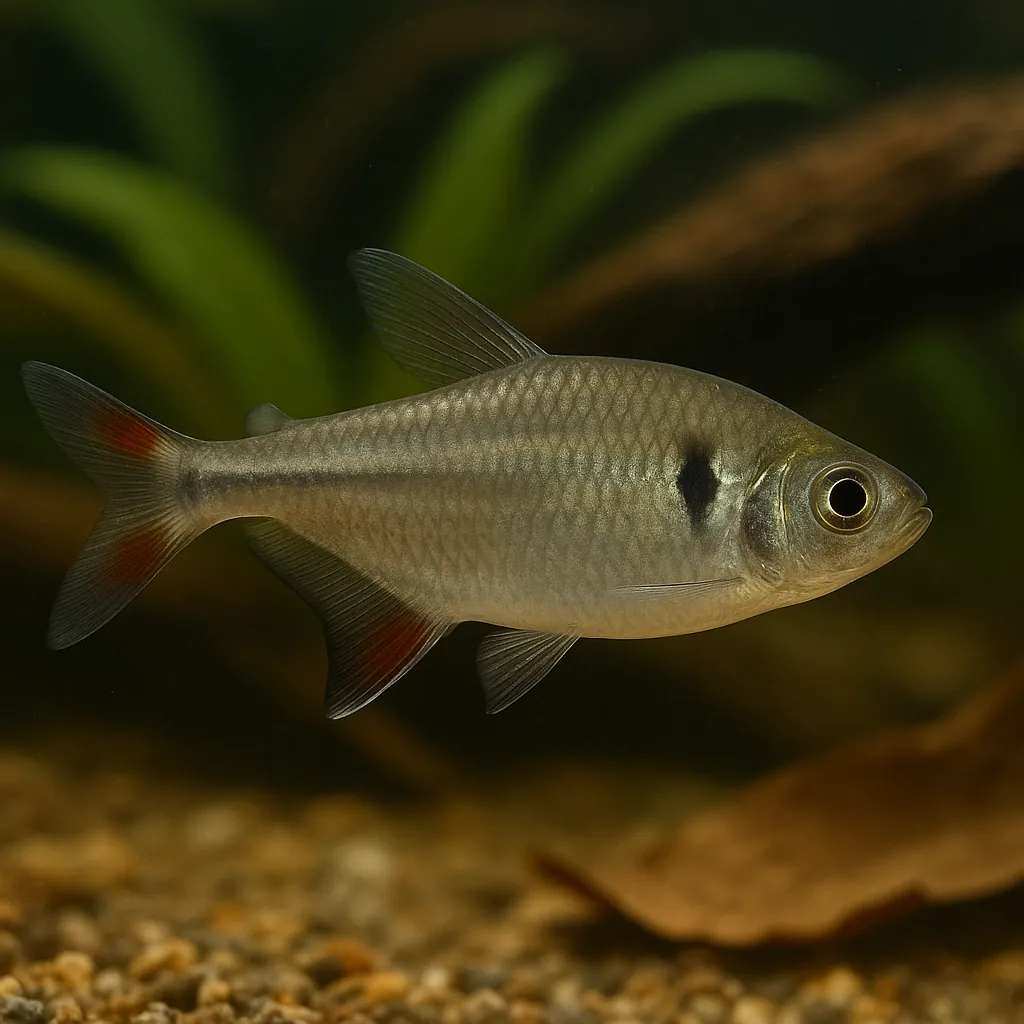
Ceros tetra
Introduction
Tetras are small, colorful freshwater fish belonging to the family Characidae. They are renowned for their vibrant hues and peaceful demeanor, making them a favorite among both novice and experienced aquarists. Their schooling behavior and active swimming patterns add dynamic movement to any aquarium. Generally, tetras are hardy and adaptable, but specific care requirements can vary among species.
What makes tetras appealing to aquarists?
Their striking colors, peaceful nature, and active schooling behavior make tetras a captivating addition to community tanks.
Are tetras suitable for beginners?
Yes, many tetra species are hardy and adaptable, making them ideal for novice fishkeepers.
Do tetras require special care?
While generally easy to care for, tetras thrive best when their specific environmental and dietary needs are met.
Care and Environment
Proper care is essential to ensure the health and longevity of tetras. While specific requirements can vary among species, the following guidelines provide a general framework:
What is the minimum tank size for tetras?
A minimum of 40 liters is recommended for a small group of tetras. Larger tanks are preferable to accommodate their active swimming and schooling behavior.
What water parameters do tetras prefer?
Tetras thrive in water temperatures between 22°C and 27°C, with a pH range of 6.5 to 7.5. Regular testing and maintenance are crucial to keep these parameters stable.
How should a tetra tank be set up?
Incorporate live plants, driftwood, and rocks to mimic their natural habitat and provide hiding spots. A dark substrate can enhance their colors. Ensure the tank has a fitted lid to prevent escape.
What type of filtration and lighting do tetras need?
Use a filter that provides gentle to moderate water flow, as tetras prefer slow-moving waters. Subdued lighting, possibly with floating plants, can replicate their natural environment.
What should I feed my tetras?
Tetras are omnivorous and benefit from a varied diet, including high-quality flakes or pellets, supplemented with live or frozen foods like brine shrimp or bloodworms. Feed small amounts once or twice daily, ensuring they consume the food within a few minutes.
Are there any specific challenges in keeping tetras?
Some tetra species can be sensitive to water quality and may exhibit fin-nipping behavior if not kept in adequate numbers. Maintaining a stable environment and keeping them in appropriate group sizes can mitigate these issues.
Origin and Habitat
Tetras are native to freshwater rivers and streams in South America and Africa. They typically inhabit slow-moving waters with dense vegetation, providing ample hiding spots and a rich environment for foraging. The water in these regions is often soft and slightly acidic, with temperatures ranging from 22°C to 27°C. Seasonal variations can affect water flow and availability of food sources, influencing their natural behaviors.
Where are tetras originally from?
Tetras are primarily found in the freshwater rivers and streams of South America and Africa.
What type of environments do tetras inhabit?
They thrive in slow-moving waters with dense vegetation, which offer ample hiding spots and foraging opportunities.
How do seasonal changes affect tetras in the wild?
Seasonal variations can influence water flow and food availability, impacting their natural behaviors and breeding patterns.
Temperament and Compatibility
Tetras are generally peaceful and social fish that thrive in groups. They exhibit schooling behavior, which not only provides a captivating display but also helps reduce stress among individuals. Keeping them in groups of at least six is recommended to encourage natural behaviors and minimize potential aggression.
Are tetras peaceful fish?
Yes, tetras are known for their peaceful nature, making them suitable for community tanks.
Do tetras need to be kept in groups?
Absolutely, tetras are schooling fish and should be kept in groups of at least six to promote natural behavior and reduce stress.
What are suitable tank mates for tetras?
Compatible tank mates include other small, peaceful species such as rasboras, guppies, mollies, platies, and corydoras catfish. Avoid housing them with larger or aggressive fish that may intimidate or prey on them.
Interesting Facts
Tetras have been a staple in the aquarium trade for decades, admired for their vibrant colors and dynamic schooling behavior. Some species, like the neon tetra, have been selectively bred to enhance their coloration, resulting in various color morphs. In the wild, tetras play a crucial role in their ecosystems by controlling insect populations and serving as prey for larger species. Their adaptability and resilience have contributed to their widespread popularity among aquarists.
Why are tetras popular in the aquarium trade?
Their vibrant colors, peaceful nature, and active schooling behavior make them a favorite among aquarists.
Have tetras been selectively bred?
Yes, certain species like the neon tetra have been selectively bred to enhance their coloration, resulting in various color morphs.
What role do tetras play in their natural ecosystems?
In the wild, tetras help control insect populations and serve as prey for larger species, maintaining ecological balance.
Sources
All information in this article has been gathered from the following reputable sources:
Overview
Recommended Tank Size 21.1 Gallons (for groups of 6 or more) |
Minimum Group Size 6 |
Minimum Tank Volume 10.6 Gallons |
Maximum Adult Length 2 inches |
Average Adult Length 1.6 inches |
Shoaling (6+ required) Yes |
Preferred Water Type Freshwater, soft, slightly acidic |
Temperature Range (°C) 22–27 |
pH Range 6.5–7.5 |
Water Hardness (dGH) 4–12 |
Typical Lifespan (years) 5 years |